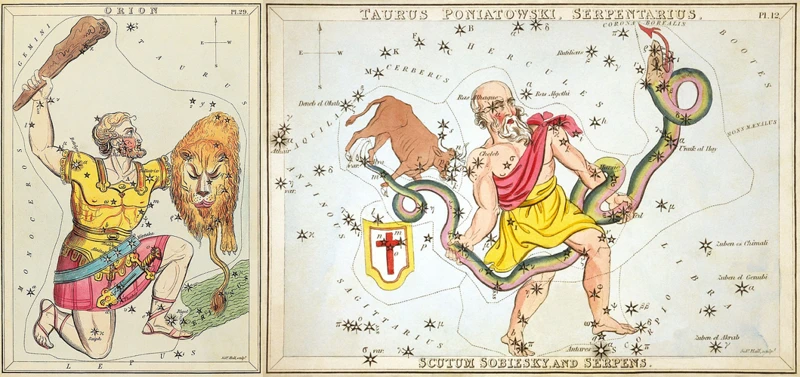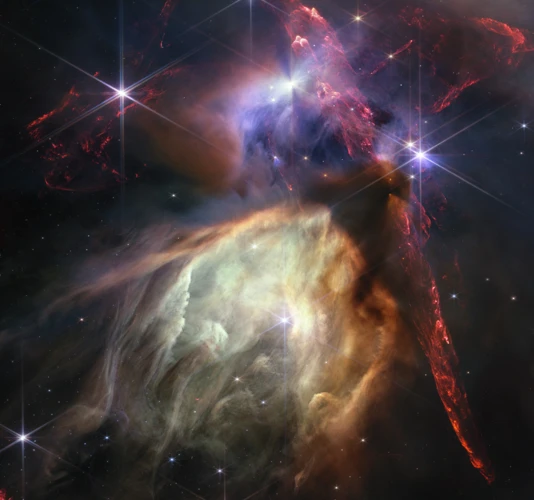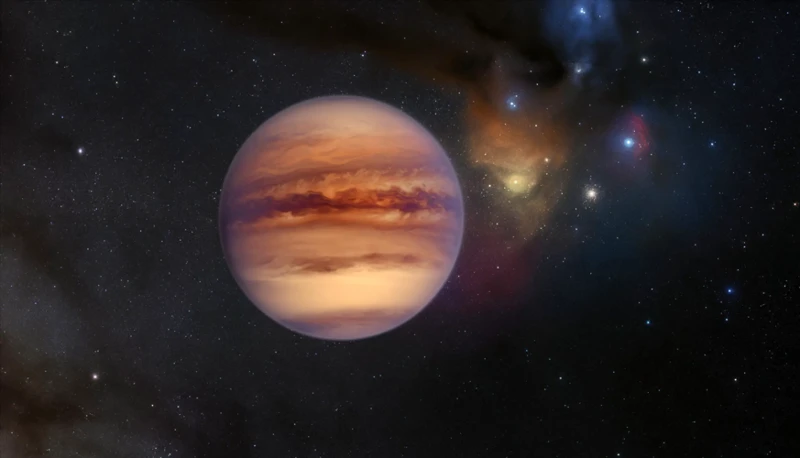The history of studying planetary alignments is a fascinating journey that spans across ancient civilizations to modern times. From the ancient observations and interpretations of celestial movements to the birth of modern astronomy and the development of telescopes, this article will delve into the search for patterns and connections in planetary alignments. We will explore the work of renowned astronomers like Johannes Kepler and the impact of Newton’s laws on understanding gravitational influences. Advancements in technology, such as telescopes and computational tools, have revolutionized the study of planetary alignments. Additionally, we will discuss the role of space missions and the exciting discovery of exoplanets. Join us on this captivating exploration of the mysteries surrounding planetary alignments throughout history.
Contents
- Ancient Civilizations and Astrology
- The Birth of Modern Astronomy
- The Search for Patterns and Connections
- Advancements in Technology and Methodology
- Contemporary Studies and Exploration
- Conclusion
-
Frequently Asked Questions
- 1. How did ancient civilizations study planetary alignments?
- 2. Did ancient civilizations believe that planetary alignments influenced human affairs?
- 3. How did ancient astrology interpret planetary alignments?
- 4. Did ancient civilizations track planetary alignments for practical purposes?
- 5. How did the development of telescopes impact the study of planetary alignments?
- 6. What were some of the early discoveries in planetary alignments?
- 7. What was Johannes Kepler’s contribution to the study of planetary alignments?
- 8. How did Newton’s laws influence the study of planetary alignments?
- 9. What technological advancements have aided the study of planetary alignments?
- 10. How have space missions contributed to the study of planetary alignments?
- References
-
Frequently Asked Questions
- 1. How did ancient civilizations study planetary alignments?
- 2. What astrological significance do planetary alignments hold?
- 3. How did the development of telescopes impact the study of planetary alignments?
- 4. What were some early discoveries made in the study of planetary alignments?
- 5. Who was Johannes Kepler and what was his contribution to the study of planetary alignments?
- 6. How did Newton’s laws and gravitational influences affect the study of planetary alignments?
- 7. What advancements in technology have aided the study of planetary alignments?
- 8. What role do space missions play in contemporary studies of planetary alignments?
- 9. What is the significance of the discovery of exoplanets in the study of planetary alignments?
- 10. How have studies of planetary alignments contributed to our overall knowledge of the universe?
- References
- Read More
Ancient Civilizations and Astrology

Ancient civilizations across the world, including the Mesopotamians, Egyptians, and Greeks, were deeply fascinated by the celestial bodies overhead. They meticulously observed and recorded the movements of the Sun, Moon, planets, and stars, believing that they held great significance and influence over human affairs. These early astronomers noticed patterns and alignments in the celestial sphere and associated them with events on Earth. For example, the ancient Egyptians believed that the annual flooding of the Nile River was influenced by the rising of the star Sirius. The Mesopotamians, on the other hand, developed intricate systems of astrology, which linked the positions of celestial objects with the destinies of individuals and societies. These observations and interpretations formed the foundation of ancient astrology and played a crucial role in shaping the belief systems and daily lives of these ancient civilizations.
Ancient astrologers believed that planetary alignments had profound astrological significance. They interpreted these alignments as signals of potential events and patterns in the natural and human world. For instance, the conjunction of the planets Venus and Mars was seen as a sign of potential conflicts or intense passions. The alignment of the planets Mercury, Venus, and Mars was associated with the accumulation of knowledge and intellectual breakthroughs. These interpretations were deeply rooted in the belief that celestial movements influenced the fate and characteristics of individuals and societies. While modern science has largely separated astrology from astronomy, the ancient practice of associating planetary alignments with human affairs and individual destinies continues to capture the curiosity of many people today.
Ancient Observations and Interpretations
Ancient civilizations meticulously observed and recorded celestial movements, forming the basis for their interpretations of planetary alignments. These early astronomers developed various techniques to track the motions of the Sun, Moon, and planets. One of the most prominent methods was the use of stone circles, such as Stonehenge in England, which served as precise astronomical observatories. These ancient observers recognized patterns and recurring alignments in the heavens, noting the cyclic nature of planetary movements. For example, the Babylonians carefully tracked the positions of the planets and recorded their observations on clay tablets, forming the foundation of their astrological predictions. They believed that these alignments held significant meaning and could provide insights into the future. The Mayans, too, developed advanced astronomical systems and accurately predicted celestial events using their observatories and elaborate calendars. These ancient observations and interpretations laid the groundwork for the belief in the connections between celestial movements and earthly events, inspiring generations to study planetary alignments in the centuries that followed.
Astrological Significance of Planetary Alignments
The astrological significance of planetary alignments has long been a subject of intrigue and contemplation. Ancient civilizations believed that the positions and alignments of the planets held deep meaning and influence over human lives. They associated each planet with specific characteristics and attributed certain qualities to their alignments. Here are some examples:
1. Conjunctions: When planets align in what is known as a conjunction, astrologers saw this as a powerful alignment symbolizing the merging of energies. For instance, the conjunction of Venus and Jupiter was considered auspicious, representing opportunities for abundance, love, and good fortune. Similarly, the conjunction of Mars and Saturn was seen as a challenging alignment, signifying potential obstacles or conflicts.
2. Oppositions: An opposition occurs when two planets are directly across from each other in the night sky. Ancient astrologers believed that this alignment created tension and polarity. For example, the opposition of the Sun and Moon, known as a Full Moon, was thought to heighten emotions and often linked to increased energy and events of significance.
3. Trines: A trine alignment forms when planets are approximately 120 degrees apart. This alignment was considered harmonious, symbolizing flow and ease of energy. Ancient astrologers saw trines as supportive alignments that brought opportunities and positive outcomes. For instance, the trine of Mercury and Mars was associated with effective communication and assertiveness.
These astrological interpretations of planetary alignments were used to gain insight into individual traits, relationships, and future events. While astrology has evolved over time, the curiosity and fascination surrounding the astrological significance of planetary alignments continue to captivate many to this day.
The Birth of Modern Astronomy

The birth of modern astronomy marked a significant shift in the study of planetary alignments. With advancements in technology and a focus on scientific inquiry, astronomers began to move away from astrological interpretations and towards a more empirical approach. One key development during this period was the invention of the telescope in the early 17th century. Pioneers like Galileo Galilei used telescopes to make groundbreaking observations, including the discovery of Jupiter’s moons and the phases of Venus. These discoveries challenged the traditional geocentric model of the universe and provided evidence for the heliocentric model proposed by Nicolaus Copernicus. The establishment of observatories, such as the Royal Observatory in Greenwich, England, further facilitated the systematic study of planetary alignments. Astronomers now had the means to observe celestial objects more accurately and track their movements in great detail. This marked a turning point in human understanding of the cosmos and laid the foundation for further exploration and investigation. The birth of modern astronomy paved the way for new discoveries and the continued unraveling of the mysteries of planetary alignments.
The Development of Telescopes and Observatories
The development of telescopes and observatories revolutionized the study of planetary alignments and transformed our understanding of the cosmos. In the early 17th century, pioneering astronomers like Galileo Galilei and Johannes Kepler began using telescopes to observe celestial bodies in unprecedented detail. Galileo observed the phases of Venus and the moons of Jupiter, providing evidence for the heliocentric model of the solar system. Kepler, on the other hand, used detailed observations of planetary motions to formulate his laws of planetary motion, which explained the precise movements of planets around the Sun.
As technology advanced, so did telescopes and observatories. In the late 18th century, the construction of large observatories, such as the Royal Observatory in Greenwich, England, allowed astronomers to make more accurate and systematic observations of planetary alignments. These observatories were equipped with increasingly powerful telescopes, enabling astronomers to observe distant planets and their alignments with greater clarity.
One significant advancement in telescope technology was the development of reflector telescopes, which use mirrors instead of lenses to gather and focus light. Sir Isaac Newton invented the first practical reflecting telescope in the 17th century, and this design paved the way for larger and more powerful telescopes to be developed in the following centuries.
The development of telescopes and observatories played a vital role in the study of planetary alignments. Astronomers were able to observe and document the precise positions of planets and their alignments with other celestial objects, contributing to our understanding of planetary motion and the mechanics of the solar system. Today, modern observatories equipped with state-of-the-art telescopes continue to explore and unravel the wonders of planetary alignments, providing valuable insights into the workings of the universe.
Early Discoveries in Planetary Alignments
Early observations of planetary alignments played a crucial role in the development of modern astronomy. Astronomers like Tycho Brahe and Johannes Kepler dedicated their lives to meticulously recording and analyzing the movements of celestial objects. One of the most significant early discoveries in planetary alignments was Kepler’s discovery of the three laws of planetary motion. Kepler’s first law, also known as the law of ellipses, revolutionized the understanding of planetary orbits by stating that planets move in elliptical paths around the Sun. This law provided a more accurate description of the movements of planets compared to the previously held belief of circular orbits. Kepler’s second law, the law of equal areas, highlighted the fact that planets sweep equal areas in equal times, demonstrating the varying speeds of planets in different parts of their orbits. Finally, Kepler’s third law, the law of harmonies, established a mathematical relationship between the orbital periods of planets and their average distances from the Sun. These early discoveries in planetary alignments paved the way for a deeper understanding of the mechanics of the solar system and laid the foundation for further advancements in celestial mechanics.
The Search for Patterns and Connections

The search for patterns and connections in planetary alignments has been a driving force in the field of astronomy. One key figure in this pursuit was Johannes Kepler, a German astronomer and mathematician. Kepler dedicated much of his career to studying the motions of the planets and their alignments. Through meticulous observations and mathematical calculations, he discovered that the planets moved around the Sun in elliptical orbits, rather than perfect circles as previously believed. This groundbreaking discovery, known as Kepler’s laws of planetary motion, provided a deeper understanding of planetary alignments and laid the groundwork for modern celestial mechanics.
Another significant milestone in the search for patterns and connections came with the advancements made by Sir Isaac Newton. Newton’s laws of motion and universal gravitation revolutionized our understanding of how celestial objects, including planets, interact with each other. His laws explained the gravitational influences that shape planetary orbits and alignments. Newton’s work paved the way for the development of celestial mechanics, a branch of physics dedicated to studying the motion and interactions of celestial objects.
In contemporary studies, advancements in technology and methodology have played a crucial role in uncovering deeper insights into planetary alignments. Telescopes have become increasingly powerful, allowing astronomers to capture detailed images and data of planets and their alignments. Imaging techniques, such as spectroscopy, enable scientists to analyze the composition and properties of celestial objects in unprecedented detail. These technological advancements, combined with computational tools, have provided astronomers with the means to analyze vast amounts of data and extract patterns and connections within planetary alignments. This data-driven approach has opened up new avenues for research and exploration.
The search for patterns and connections in planetary alignments has been an ongoing quest throughout history. From the groundbreaking work of Johannes Kepler and Isaac Newton to the advancements in technology and methodology, astronomers continue to unravel the mysteries surrounding the motion and alignments of planets. By studying these patterns and connections, we deepen our understanding of the universe and our place within it.
The Work of Johannes Kepler
Johannes Kepler was a prominent German astronomer and mathematician who made significant contributions to our understanding of planetary alignments. In the early 17th century, Kepler formulated three laws of planetary motion that revolutionized our perception of celestial mechanics. Kepler’s first law, known as the law of ellipses, stated that planets move in elliptical orbits with the Sun at one of the foci. This discovery challenged the prevailing belief in perfect circular orbits. His second law, the law of equal areas, demonstrated that a line connecting a planet to the Sun sweeps equal areas in equal intervals of time, indicating that a planet’s speed varies throughout its orbit. Finally, Kepler’s third law, the harmonic law, established a mathematical relationship between a planet’s distance from the Sun and its orbital period. These laws not only provided a mathematical framework for understanding the motion of planets but also laid the foundation for Isaac Newton’s later work on universal gravitation. Kepler’s groundbreaking research and laws of planetary motion paved the way for a deeper understanding of planetary alignments and had a profound impact on the field of astronomy.
Newton’s Laws and Gravitational Influences
Newton’s laws of motion and the concept of gravitational influences revolutionized our understanding of planetary alignments and their behavior. Sir Isaac Newton, a renowned physicist and mathematician, developed these laws in the late 17th century. His first law, also known as the law of inertia, states that an object at rest will remain at rest, and an object in motion will continue in a straight line at a constant velocity unless acted upon by a force. This law helped astronomers comprehend why planets tend to move along elliptical orbits around the Sun rather than in straight lines.
Newton’s second law introduces the concept of force equal to mass multiplied by acceleration. In the context of planetary motion, this reveals that the gravitational pull between two celestial bodies is directly proportional to their masses and inversely proportional to the square of the distance between them. This understanding opened up a new era of celestial mechanics, enabling scientists to explain the complex interactions between planets and predict their positions with remarkable accuracy.
The most transformative of Newton’s laws for studying planetary alignments is his third law, which states that every action has an equal and opposite reaction. In the context of gravitational forces, this means that when two objects exert gravitational force on each other, the magnitude of the force is the same, but they act in opposite directions. This law explains why planets in our solar system experience gravitational influences not only from the Sun but also from each other, creating intricate patterns of alignments and interactions.
With Newton’s laws, astronomers gained a deeper understanding of the gravitational pull between celestial bodies and its impact on planetary alignments. This knowledge paved the way for further advancements in celestial mechanics, allowing scientists to explore the dynamics of our solar system and beyond. Today, Newton’s laws remain fundamental to our understanding of the universe and play a vital role in various astronomical studies, such as the search for exoplanets, the behavior of binary star systems, and even the dynamics of galaxies.
[Link: Ancient Constellations Influence Modern Astronomy]
The Emergence of Celestial Mechanics
The emergence of celestial mechanics revolutionized our understanding of planetary alignments and their underlying principles. This field of study began to take shape with the works of Johannes Kepler, a renowned astronomer of the 17th century. Kepler’s meticulous observations and mathematical analysis led to the formulation of his three laws of planetary motion, which laid the foundation for celestial mechanics. His first law, known as the law of ellipses, states that planets orbit the Sun in elliptical paths rather than perfect circles. The second law, called the law of equal areas, describes how a planet’s speed changes as it moves along its elliptical orbit. The third law, known as the harmonic law, establishes a mathematical relationship between a planet’s orbital period and its distance from the Sun.
Understanding planetary alignments became more robust with the groundbreaking work of Sir Isaac Newton and his laws of motion and universal gravitation. Newton’s laws provided a physical explanation for the planetary motions described by Kepler’s laws, revealing that the gravitational force between celestial bodies is responsible for their orbits and alignments. The concept of gravitational influences extended beyond the planets to include phenomena such as the tides caused by the interactions between the Earth, Moon, and Sun.
The emergence of celestial mechanics brought a scientific approach to understanding planetary alignments, bridging the gap between ancient observations and modern astronomical knowledge. Through mathematical models and rigorous experimentation, astronomers now possess a deeper understanding of the mechanics governing celestial objects’ movements. The principles established by Kepler and Newton formed the basis for future advancements in the study of planetary alignments and paved the way for more sophisticated research tools and techniques. Today, celestial mechanics continues to play a significant role in unraveling the mysteries of the cosmos.
Advancements in Technology and Methodology

Advancements in technology and methodology have revolutionized the study of planetary alignments. One significant advancement is the development of powerful telescopes that enable astronomers to observe celestial objects with great precision and detail. Telescopes equipped with advanced optics and imaging technologies have expanded our understanding of planetary alignments by providing clearer and more accurate observations. These telescopes have also allowed for the discovery of new celestial bodies and the identification of complex patterns in planetary movements.
In addition to telescopes, computational and data analysis tools have played a crucial role in studying planetary alignments. Astronomers can now process vast amounts of data collected from telescopes and satellites to analyze and interpret planetary movements. These tools have allowed for the detection of subtle changes in planetary alignments, helping scientists identify long-term trends and predict future alignments with greater accuracy. Computer simulations and modeling have become invaluable tools for understanding complex celestial mechanics and gravitational interactions.
The combination of advanced telescopes, computational tools, and data analysis methods has opened up new possibilities for studying planetary alignments. Astronomers can now observe planetary alignments in multiple wavelengths of light, including radio and infrared, providing unique insights into the behavior and composition of celestial bodies. Sophisticated imaging techniques allow for high-resolution mapping of planetary surfaces, offering a closer look at the features and dynamics of these objects.
These advancements have not only improved our understanding of planetary alignments but have also contributed to the broader field of astronomy. By studying planetary alignments, scientists have gained insights into the formation and evolution of planetary systems, the dynamics of gravitational interactions, and the role of planetary migrations. The continuous development of technology and methodology promises even more exciting discoveries and a deeper understanding of the fascinating world of planetary alignments.
Telescopes and Imaging Techniques
Telescopes and imaging techniques have played a crucial role in advancing our understanding of planetary alignments. With the invention of the telescope in the early 17th century, astronomers gained the ability to observe celestial objects in greater detail. The development of larger and more powerful telescopes, such as the refracting and reflecting telescopes, allowed scientists to capture clearer images and collect more precise data. These technological advancements opened up new possibilities for studying planetary alignments.
Imaging techniques have also revolutionized the field of astronomy. Scientists can now use various methods, such as astrophotography and spectroscopy, to capture detailed images and gather information about the composition, temperature, and other properties of celestial bodies. The use of CCD (Charge-Coupled Device) cameras, for example, has greatly improved the resolution and sensitivity of astronomical images. These advancements in imaging technology have enabled researchers to closely examine planetary alignments and study their characteristics and dynamics.
In recent years, space-based telescopes, like the Hubble Space Telescope, have provided us with breathtaking images and invaluable data about planetary alignments. By avoiding atmospheric interference, these telescopes can capture incredibly sharp images and observe celestial objects across different wavelengths, including ultraviolet and infrared. This has allowed astronomers to study planetary alignments in even greater detail and uncover previously unknown phenomena.
Telescopes and imaging techniques have significantly enhanced our ability to observe and study planetary alignments. The advancements in telescope technology, along with the development of sophisticated imaging methods, have provided us with a wealth of information about the movements and interactions of celestial bodies. These tools continue to shape our understanding of planetary alignments and contribute to ongoing discoveries and research in the field of astronomy.
Computational and Data Analysis Tools
In the field of studying planetary alignments, computational and data analysis tools have revolutionized the way astronomers analyze and interpret celestial movements. With the vast amounts of data collected from telescopes and space missions, powerful computational tools enable astronomers to uncover patterns and correlations that were once impossible to detect. Sophisticated algorithms and statistical models allow for precise calculations of planetary positions and alignments, helping researchers identify rare and significant occurrences. Visualization software and data analysis programs provide astronomers with the means to explore and interpret the vast amounts of data collected. These tools aid in the identification of planetary alignments, the analysis of their frequencies and durations, and the examination of their potential impacts on planetary systems. By leveraging these computational and data analysis tools, astronomers can continue to deepen our understanding of the intricate dance of celestial bodies and unravel the mysteries of planetary alignments.
Contemporary Studies and Exploration

Contemporary studies and exploration in the field of planetary alignments have been greatly enhanced by advancements in technology and space missions. Space agencies like NASA and ESA have launched numerous missions to study planets, moons, and other celestial bodies in our solar system. These missions, such as the Voyager and Cassini missions, have provided scientists with detailed data and images of planetary alignments and their effects on the surrounding environment. Additionally, space telescopes like the Hubble Space Telescope have allowed astronomers to observe distant planetary systems and study their alignments. The use of advanced telescopes and imaging techniques, coupled with computational and data analysis tools, has revolutionized our ability to study and understand planetary alignments. The discovery of exoplanets, planets outside our solar system, has opened up new avenues for studying planetary alignments in a broader context. These observations and discoveries have deepened our understanding of planetary dynamics and shed light on the formation and evolution of planetary systems. With ongoing advancements in technology and continued space exploration, the study of contemporary planetary alignments is poised to uncover even more mysteries of our vast and complex universe.
The Role of Space Missions
Space missions have played a critical role in expanding our knowledge of planetary alignments and the dynamics of celestial bodies. By sending probes and satellites into space, scientists have been able to observe and study planetary alignments from vantage points that are not possible from Earth. These missions have provided invaluable data and insights into the interactions between planets, moons, and other celestial objects within our solar system.
One prominent example of the role of space missions in studying planetary alignments is the Voyager mission launched by NASA in the late 1970s. The Voyager spacecraft successfully explored the outer planets of our solar system, including Jupiter, Saturn, Uranus, and Neptune. These missions provided groundbreaking images and data that revealed the intricate details of these planets, their moons, and their positions in relation to one another. Through the Voyager missions, scientists were able to gather data on the planetary alignments in our outer solar system and understand the complex interactions between these massive celestial bodies.
Space missions have also allowed scientists to study planetary alignments beyond our solar system. For example, the Kepler Space Telescope, launched by NASA in 2009, has been instrumental in discovering thousands of exoplanets. By monitoring the brightness of distant stars, Kepler enabled scientists to identify planets orbiting these stars and investigate their orbital positions and alignments. These observations have expanded our understanding of planetary systems in other galaxies and shed light on the prevalence of planetary alignments in the universe.
The data gathered from space missions is invaluable for studying planetary alignments and their impact on the dynamics of celestial bodies. It allows astronomers to continue exploring and unraveling the mysteries of our universe. Through ongoing advancements in space technology and the planning of future missions, we can expect further breakthroughs in our understanding of planetary alignments and their significance in the cosmos.
Learn more about the mysteries of black holes and spacetime.
The Discovery of Exoplanets
The discovery of exoplanets has revolutionized our understanding of the universe and our place within it. Until recently, it was widely believed that our solar system was unique in its ability to support planets. However, advancements in technology, specifically the development of highly sensitive telescopes and advanced data analysis tools, have allowed astronomers to detect planets orbiting stars beyond our own solar system. These planets, known as exoplanets, come in a wide range of sizes, compositions, and orbital configurations.
One of the groundbreaking methods used in the discovery of exoplanets is the transit method. This technique involves measuring the slight dimming of a star’s brightness as an exoplanet passes in front of it, temporarily blocking some of the star’s light. By studying these changes in brightness, scientists can infer the presence and characteristics of the exoplanet. Another method is the radial velocity method, which relies on detecting tiny wobbles in a star’s motion caused by the gravitational pull of an orbiting exoplanet.
The discovery of exoplanets has challenged our previous understanding of planetary systems and their formation. It has revealed that Earth-like planets, potentially capable of supporting life, are more common than previously thought. Through the study of exoplanets, scientists have gained valuable insights into the processes of planetary formation and the potential for habitability beyond our own solar system.
Space missions, such as the Kepler Space Telescope and the Transiting Exoplanet Survey Satellite (TESS), have played a crucial role in these discoveries. These missions have greatly expanded our catalog of known exoplanets, providing data for further research and analysis. The study of exoplanets continues to be an active field of research, with scientists eagerly searching for signs of habitability and the potential for extraterrestrial life.
The discovery of exoplanets highlights the intricate and diverse nature of our universe, reminding us of the endless possibilities and mysteries that await our exploration. It opens up new avenues for scientific inquiry and fuels our curiosity about the existence of life beyond our own planet.
Keywords: exoplanets, discovery, solar system, technology, telescopes, data analysis, transit method, radial velocity method, planetary formation, habitability, space missions, Kepler Space Telescope, TESS, extraterrestrial life.
Conclusion

In conclusion, the study of planetary alignments has a rich and captivating history that spans ancient civilizations to modern times. Ancient cultures like the Mesopotamians and Egyptians were deeply influenced by their observations of celestial movements, associating them with events on Earth and even individual destinies. While astrology played a significant role in these ancient civilizations, modern astronomy has largely separated itself from such beliefs. Instead, astronomy and astrophysics focus on the scientific understanding of celestial phenomena and the laws of nature. Advances in technology, such as telescopes and computational tools, have enabled astronomers to explore planetary alignments and celestial mechanics with unprecedented precision and detail. Space missions have provided invaluable data and insights, leading to groundbreaking discoveries like exoplanets. As we continue to unravel the mysteries of the cosmos, the study of planetary alignments remains a fascinating subject that bridges ancient wisdom with modern scientific exploration.
Frequently Asked Questions

1. How did ancient civilizations study planetary alignments?
Ancient civilizations studied planetary alignments by carefully observing the movements of celestial bodies such as the Sun, Moon, planets, and stars. They recorded these observations and interpreted them based on their cultural and religious beliefs.
2. Did ancient civilizations believe that planetary alignments influenced human affairs?
Yes, ancient civilizations such as the Mesopotamians and Egyptians believed that planetary alignments had a significant influence on human affairs. They associated these alignments with events and patterns in the natural and human world, shaping their belief systems and daily lives.
3. How did ancient astrology interpret planetary alignments?
Ancient astrology interpreted planetary alignments as signs of potential events and patterns. For example, the conjunction of certain planets was associated with conflicts or intense passions, while other alignments were seen as indicators of intellectual breakthroughs or the accumulation of knowledge.
4. Did ancient civilizations track planetary alignments for practical purposes?
Ancient civilizations did track planetary alignments for practical purposes, such as determining the best times for planting and harvesting crops, predicting weather patterns, and even making decisions related to governance and warfare.
5. How did the development of telescopes impact the study of planetary alignments?
The development of telescopes revolutionized the study of planetary alignments by allowing astronomers to observe celestial bodies with greater precision and detail. Telescopes enabled scientists to make new discoveries and gather more accurate data about the positions and movements of planets.
6. What were some of the early discoveries in planetary alignments?
Early discoveries in planetary alignments include the identification of the so-called “wandering stars” as planets, as well as the recognition of the predictable cyclic patterns in the motion of planetary bodies.
7. What was Johannes Kepler’s contribution to the study of planetary alignments?
Johannes Kepler’s work was instrumental in understanding planetary motion and the laws governing celestial mechanics. His three laws of planetary motion described the elliptical orbits of planets around the Sun, providing a mathematical framework for studying planetary alignments.
8. How did Newton’s laws influence the study of planetary alignments?
Newton’s laws of motion and his law of universal gravitation provided a scientific explanation for the gravitational influences on planetary alignments. These laws allowed astronomers to better understand the forces at play in the movement of celestial bodies.
9. What technological advancements have aided the study of planetary alignments?
Advancements in technology, such as the development of more powerful telescopes and imaging techniques, have greatly aided the study of planetary alignments. Additionally, computational tools and data analysis methods have allowed for more sophisticated analysis and modeling of planetary movements.
10. How have space missions contributed to the study of planetary alignments?
Space missions have been instrumental in collecting data and observations of planetary alignments. Probes and satellites have been sent to explore other planets in our solar system, providing valuable information about their positions, orbits, and alignments. Such missions have expanded our knowledge of planetary alignments beyond Earth.
References
- History of astronomy
- Pioneer 11 Launched to Study Jupiter and Saturn
- The Original History of Astronomy Flashcards
Frequently Asked Questions

1. How did ancient civilizations study planetary alignments?
Ancient civilizations studied planetary alignments through careful observation of celestial bodies and the interpretation of their movements and positions in relation to one another.
2. What astrological significance do planetary alignments hold?
Planetary alignments were believed to have astrological significance, indicating potential influences on human affairs, personality traits, and life events according to the principles of astrology.
3. How did the development of telescopes impact the study of planetary alignments?
The development of telescopes allowed for more precise and detailed observations of celestial bodies, enabling astronomers to study planetary alignments with greater accuracy and uncover new phenomena.
4. What were some early discoveries made in the study of planetary alignments?
Early astronomers made significant discoveries, such as the realization that planetary alignments were not purely random but followed specific patterns and that they could be used to predict future celestial events.
5. Who was Johannes Kepler and what was his contribution to the study of planetary alignments?
Johannes Kepler was a renowned mathematician and astronomer who proposed laws describing the motion of planets, including their alignments. His contributions laid the foundation for modern celestial mechanics.
6. How did Newton’s laws and gravitational influences affect the study of planetary alignments?
Newton’s laws of motion and his theory of gravity provided a mathematical framework for understanding the mechanics behind planetary alignments. They allowed astronomers to calculate and predict the movements of celestial bodies.
7. What advancements in technology have aided the study of planetary alignments?
Advancements in telescope technology and imaging techniques have allowed astronomers to capture detailed images and data on planetary alignments. Computational and data analysis tools have also enhanced their ability to analyze and interpret these alignments.
8. What role do space missions play in contemporary studies of planetary alignments?
Space missions have provided valuable data and observations of planetary alignments from vantage points outside Earth’s atmosphere, allowing for more accurate measurements and the discovery of new phenomena.
9. What is the significance of the discovery of exoplanets in the study of planetary alignments?
The discovery of exoplanets has expanded our understanding of planetary formations and alignments beyond our own solar system. Studying the alignments of exoplanets can provide insights into the formation and dynamics of planetary systems.
10. How have studies of planetary alignments contributed to our overall knowledge of the universe?
Studies of planetary alignments have deepened our understanding of celestial mechanics, planetary dynamics, and the forces that govern the universe. They have also shed light on the intricate connections and patterns that exist within our solar system and beyond.







